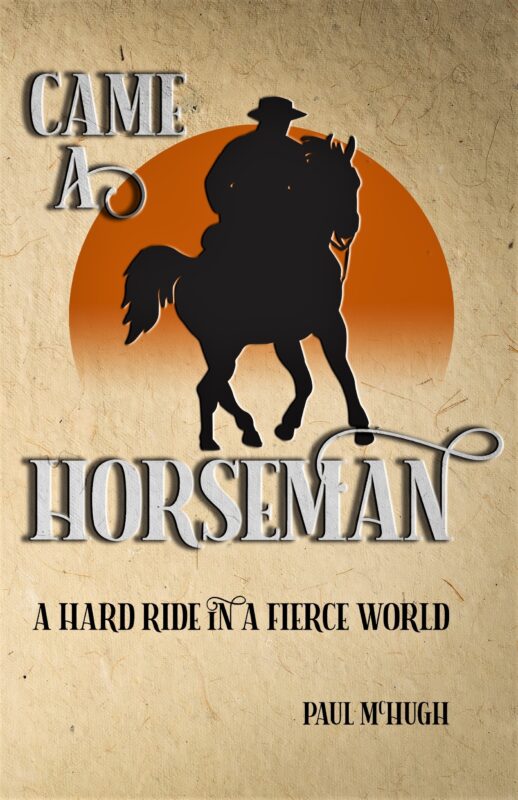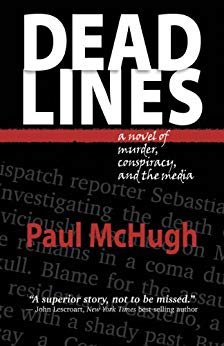California North Coast Series
By Paul McHugh, Outdoors Writer
September 21
Let’s stipulate that predicting weather on the North Coast during autumn can be a thankless task, even for highly trained meteorologists. That said, on this trip, I felt like I could chew up and swallow a few pages from the Farmers’ Almanac then puke up a more reliable weather report than most of those we’d been getting.
On Tuesday night, I went to sleep after hearing that the morning would bring 10-14 foot-high seas, and 25 mph winds from the northwest – conditions that would make our proposed run south to Big Flat on the Lost Coast unsafe and unworkable. I woke up at 3 a.m., ate a granola bar, and checked the weather radio at 4 a.m. to find the prediction remained the same.
Then quite abruptly, just after sunrise, it switched. The NOAA weatherman began calling for 7-9 foot seas, and a southwest wind of just 12 mph from the southwest, conditions that might last until late afternoon. And after that, what? Things could turn nightmarish, since another gale was slated to crash ashore and blow for days on end. Barometer readings had already begun to plummet.
A Tough Choice
I had asked that we all arise early and begin to pack up, just in case we saw a window of opportunity to launch, and my companions had complied. Now came time for a heart-to-heart. I serenaded them with a few Dylan lines, telling them to gather round, admit the waters around us had grown, a bone-drenching was on order, and that life-saving needed to be at the head of our agenda.
I got down to brass tacks. “Look, I think our only choice, if we decide to launch at all, is to blow off Big Flat as a destination and aim all the way for Shelter Cove. It will be the longest we’ve ever paddled in a day, by far, like 35 or 36 miles, and there’s a possibility conditions might turn totally sour along the way.
“Now, before we vote on whether or not we want to roll our dice and take a chance like that, I can say we do have a choice. I am willing to try to find a local who owns a flatbed truck, and hire him to load all our boats and gear onto it, then drive us on back roads down to Shelter Cove, where we can hole up through the next storm. That’s our safe and sane alternative. So, what’ll it be?”
Not only did these guys vote to shake, rattle and roll the dice and cast our fate out onto the waters, they did so with high enthusiasm.
Iacta Alia Est

Paul McHugh helps John Weed launch one of their heavily-laden kayaks. Photo by Michael Maloney, S.F. Chronicle.
Soon our watertight bags were stuffed in our kayaks, our bodies were stuffed into our cockpits. We punched out through the surf and set our sights on that aptly named distant refuge, the protected harbor and rural town of Shelter Cove.
On both big coastal bulges that we’d rounded thus far – Point St. George and Cape Mendocino – we’d barely dodged blows the weather had aimed at us. That was fortunate, because exposed promontories collect and exacerbate the most turbulent conditions the ocean can produce.
It also proved true at this day’s major challenge, Punta Gorda.
The main current flowing off the North Coast is the California Current, which courses along in a southerly direction, and had been awarding us a moderate boost throughout our voyage. However, a commercial fisherman had warned us that Punta Gorda had an odd counter-current, perhaps a massive eddy of some sort, pushing the opposite way. Another interesting effect was that we had northwest swells, and this opposing current shoved them up to a height of ten feet as we paddled along. If the strong winds happened to arrive early, we’d be in a hell of a fix.
But given the grand distance we had to cover, I thought it important to pace ourselves, and was lagging along at what I thought was a 3-4 mph pace. My GPS was switched off to conserve batteries. However, Barnes, who had his GPS switched on, began to chide me. “Look!” he said. “We might be paddling, but we’re not really getting anywhere. Our net speed is only 2 mph, because of the current. We’ve got to pick it up if we hope to might Shelter Cover before nightfall.”
Well, he was right. I adopted a faster paddle rotation, and our trio powered around the point. As we did so, we encountered a commercial fisherman aboard a salmon troller heading north. We didn’t talk to him, but he did come out of his wheelhouse and stare at us as though he couldn’t believe his eyes.
Cruising the Lost Coast
Once past the point, we cruised in toward shore and paddled along the tall forested ridges and sudden hidden valleys and thin rough beaches of the fabled Lost Coast. In these near-shore waters we were largely out of the counter-current and could also pick up a shove from the following seas. Still, we raced the clock, feeling ourselves more than a beat behind.
That meant, after we passed Big Flat, it was smarter to head back out to sea instead of continuing along the shore, so we could chart a straight course between the horns of Big Flat and Shelter Cove. The sun was on its downward arc now, so our clock was ticking, but the gale had not begun to manifest. Yet.

Miles offshore, sea lions frolic around our kayaks. But they vanish when a huge great white shark appears. Photo by John Weed.
A few miles offshore, we saw huge swarms of terns and gulls performing a “kettling” maneuver, which looks exactly the way it sounds. They made big bowl shapes in the sky as they spiraled around either a school of baitfish or some type of large marine kill, perhaps the floating carcass of a dead whale. They held steady over the same spot for a remarkably long while. As we came in under them, sea lions that had been playing around our boats abruptly vanished.
Wake-up Call from a Landlord
And then Weed pointed to a long, black straight line sticking up out of the sea, about forty yards away. “Hey, what do you think that is?” he asked. “A fencepost?”
Next that line twisted sideways and then I could see that it was not a stick, but a dorsal fin, one about four feet tall. It had no accompanying blowhole or spout, nor were there any other fins nearby.
“I think we’ve all got a fair notion what critter that is,” I said. “Let’s start paddling closer, side-by-side, so we look like something bigger.”
“And pick up our pace,” Barnes added.
Well, that had already happened. Sighting a giant great white shark did provide an extra incentive to motor the heck away from here and try to reach Shelter Cove before night.
Surfing the Darkness
But we didn’t make it. The sun sank, the lights of the town twinkled in the distance, and the luminous glow of dusk faded into inky darkness. We could only spot the breakers hitting cliffs and offshore rocks by their walls of glowing foam. Our sole edge would be the lit screen of my Garmin mapping GPS, which could show the southernmost rocks, the buoy, and our relative position. With it, we could make it around the corner. I switched it on. At the same time, I began to surf waves that humped up to starboard, trying to get a ride in, but hoping to turn off before they broke.
Weed and Barnes remonstrated with me, and I could see why. It was far too late and we were way too tired to try to deal with a rescue that might be needed if I happened to wreck on the reef. But I did not stop. I also had to keep stabbing at a button on the GPS to keep the nav-screen lit, since it kept turning itself off as a battery-saving measure. The combination of scouting, paddling, surfing, and button-pushing was the single most aggravating, arduous mess of multi-tasking I’ve ever attempted.
Shelter from the Storm
Then! Finally we made it past the reef and a breakwater, and I could see a tiny red light in the harbor aglow like an electric ruby. The sighting felt glorious, glamorous, exciting and reassuring all at once. Simultaneously, the blocked-off winds and waves all vanished. We glided in to our landing as if sliding on a smooth, oiled sheet of black steel.
We’d been thirteen hours in the saddle, paddling hard with no breaks. I tumbled out of the cockpit and staggered around on the sand. My butt hurt, of course, but so did my feet, from hours of pushing the rudder pedals. Shoulders, elbows and hands, also. Well, everything ached. My total energy level flickered, and spheres of bright color seemed to drift across my vision. I felt beyond famished. All I’d eaten during the voyage was a handful of snacks from my deck bag.
But I still had to take care of my homies. Wearing my drysuit and booties, I jogged up the steep access road to Mario’s Bar & Grill, got there a few minutes before the restaurant shut down for the night. I bought three hot dinners to go, and toted them back down the hill. Via that one tiny move, I managed to generate a huge amount of team happiness. Instead of collapsing on the beach, we brought everything up the road to the Beachcomber Inn.











